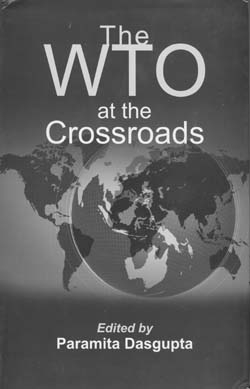The book edited by Paramita Dasgupta is a valuable contribution to the growing literature on WTO related studies. It has not only provided a conceptual framework of contemporary issues but also brought up lot of relevant aspects for India. Most of the important and contentious issues which are currently being negotiated /debated in the WTO, have been covered. The book comprises 13 articles ranging from agriculture issues, non-agriculture issues to Trade Related Intellectual Property Rights (TRIPS) and Trade Facilitation. All articles, in general, provide current negotiating issues, India’s stand on those and the future of negotiation. In case of non-agriculture market access, the articles provide the stimulated picture using various formulas and their impact on the tariff rates.
The authors argue that several issues should be kept outside the formula approach which includes flexibility towards developing countries in the form of Special and Differential Treatment (SDT). The issue of sector by sector approach should also be kept outside the standard formula approach and may be considered as a voluntary issue. The articles raise concern about the non-tariff barriers which is a growing impediment for exports from developing countries to developed countries. K.P.C. Rao in his article touches upon important issues related to agriculture and India’s experience. He discusses conflicting expectations by different countries from the new agreement describing the position of developed and developing countries.
Veena Jha in her article on GATS has looked into the services sector through a macro economic approach and then on the sectors of India’s interest. She analyses India’s strategy through a mode by mode approach. In conclusion she has suggested that India should achieve progressive liberalization without exclusion of any sector. However, more attention should be given to the sectors of export interest to India. India should also negotiate for targeted technical assistance for smooth knowledge transfer in the sectors such as telecom, health and financial services. Sound domestic regulation is also very important for the success of India’s liberalization programme. India needs to design the sequencing of the reforms which is generally a complex phenomenon. The issue of TRIPS has been discussed in the book through a number of articles. B.K. Keayla claims that the agreement has merged as the most complex area among all the WTO agreements in terms of its coverage and ramifications. A major concern continues to be public health issues and TRIPS agreements. The article holds the view that TRIPS Agreements provide flexibility which India is not yet able to exploit for its own benefit. In another paper, C. Niranjan Rao has claimed that the TRIPS agreements on public health and pharmaceutical industry will have a negative impact as there is a possibility of rise in drug prices. Developing countries will also need to pay higher royalty to access new technology.

